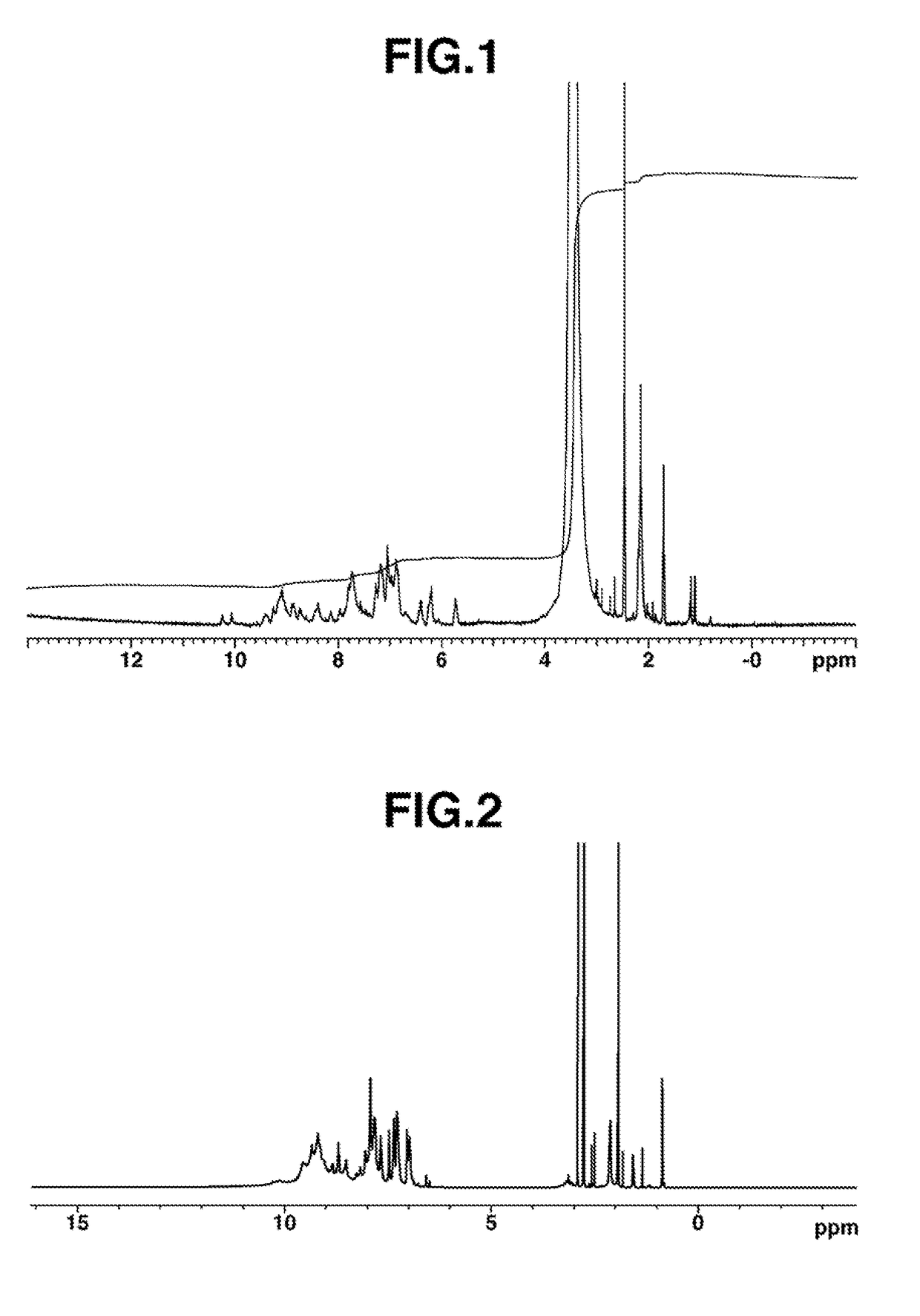Triazine-ring-containing polymer and composition containing same
a triazine ring and polymer technology, applied in the field of triazine ringcontaining polymer and a composition, can solve the problems of difficult to increase the refractive index above 1.7, unsuitable for the above applications requiring a higher index of refraction, and insufficient refractive index of existing materials used in this application, etc., to achieve excellent transparency, high heat resistance, and high refractive index
- Summary
- Abstract
- Description
- Claims
- Application Information
AI Technical Summary
Benefits of technology
Problems solved by technology
Method used
Image
Examples
working example 1-1
Synthesis of Polymeric Compound [5]
[0205]
[0206]Under nitrogen, 3,5-diaminobenzoic acid [2] (3.04 g, 0.02 mol), m-phenylenediamine [3] (1.08 g, 0.01 mol), 2,6-dimethylaniline [4] (1.21 g, 0.01 mol) and 81.49 g of NMP were added to a 100 mL four-neck flask and cooled to −10° C. on an acetone-dry ice bath. Next, a solution of 2,4,6-trichloro-1,3,5-triazine [1] (9.22 g, 0.05 mol; Evonik Degussa) dissolved in 69.85 g of THF was added dropwise and the flask contents were stirred for 1 hour. This reaction mixture was added dropwise over 30 minutes to a reactor consisting of a 300 mL four-neck flask to which had been added 81.49 g of NMP and which was preheated to 85° C. on an oil bath. Following such addition, the system was stirred for 2 hours, effecting polymerization.
[0207]Next, 11.31 g (0.125 mol) of aniline was added and the flask contents were stirred for 1 hour, bringing the reaction to completion. The system was cooled to room temperature in an ice bath, after which n-propylamine (...
working example 1-2
Synthesis of Polymeric Compound [6]
[0215]
[0216]Under nitrogen, 3,5-diaminobenzoic acid [2] (18.24 g, 0.12 mol; Nippon Junryo Chemicals) was added to a 500 mL four-neck flask and dissolved in 129.28 g of N,N-dimethylacetamide (DMAc), and the flask contents were cooled to not above 0° C. Next, 2,4,6-trichloro-1,3,5-triazine [1] (18.44 g, 0.1 mol; Evonik Degussa) was added a little at a time so as to keep the temperature within the system at 0° C. or below and the flask contents were stirred for 1 hour. This solution was added dropwise to a 500 mL four-neck flask to which had been added 129.39 g of DMAc and which was preheated to 90° C. Following addition, the reaction was effected at 90° C. for 2 hours, aniline (27.9 g, 0.3 mol; Tokyo Chemical Industry Co., Ltd.) was added dropwise and the system was stirred for 3 hours. The temperature was then lowered to room temperature and 17.7 g of n-propylamine was added dropwise, stopping polymerization.
[0217]The resulting reaction mixture was ...
working example 2-1
[0220]A film was obtained by dissolving Polymeric Compound [5] synthesized in Working Example 1-1 in PGME to a concentration of 10 wt %, using a spin coater to spin coat the resulting solution onto a glass substrate, and carrying out a 3-minute bake on a 120° C. hot plate.
PUM
| Property | Measurement | Unit |
|---|---|---|
| diameter | aaaaa | aaaaa |
| width | aaaaa | aaaaa |
| refractive index | aaaaa | aaaaa |
Abstract
Description
Claims
Application Information
 Login to View More
Login to View More - R&D
- Intellectual Property
- Life Sciences
- Materials
- Tech Scout
- Unparalleled Data Quality
- Higher Quality Content
- 60% Fewer Hallucinations
Browse by: Latest US Patents, China's latest patents, Technical Efficacy Thesaurus, Application Domain, Technology Topic, Popular Technical Reports.
© 2025 PatSnap. All rights reserved.Legal|Privacy policy|Modern Slavery Act Transparency Statement|Sitemap|About US| Contact US: help@patsnap.com



